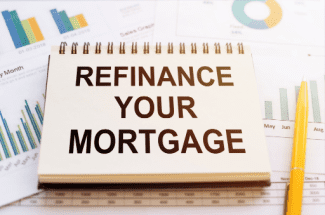The Dilemma on Whether to Refinance or Sell
By Brent Sprenkle, author of Billion Dollar Portfolio: How to Create a Real Estate Empire
At a point in the ownership of every investment property, there will be a need to sell or refinance. There is also the potential to pay off an existing loan, but for most investors that are still growing their portfolios, that is not an option as any available funds are best spent on acquiring new properties. Most investors believe that it’s best to refinance, but sometimes the need to sell exists.
6 Reasons to Refinance

- The property isn’t ready: Quite simply, you haven’t repositioned the property and you need liquidity for that purpose. Refinancing the property will free up capital which you can use to renovate the property and then achieve higher lease rates. Then you can consider selling or exchanging.
- Emotion: You are attached to this property and can’t rationalize selling it. People do become emotionally attached to real estate and while it’s never good to do this, it’s understandable.
- The property is a core asset: This property is part of your long-term plan. For instance, if you are shifting your investment strategy from apartments to industrial, then your long-term goal is to grow your industrial portfolio. So, you should refinance those properties and focus on selling the apartment buildings.
- Location: You feel the location is improving and therefore, lease rates will escalate. Of course, the situation could always go in the opposite direction, but if this is your conviction, it’s best to keep this property.
- Cash flow increased: If interest rates have dropped, you can refinance to lower your payments and increase your cash flow. Potentially, you could pull out cash and not have your debt service drastically change.
7 Reasons to Sell
- Physical condition: The property needs work and you either don’t want to or can’t deal with it. Some owners simply don’t want to have to deal with contractors, permits, and construction and would rather sell the property than take on the headache. Also, if there is an issue with the property, you might not be able to refinance it, so selling might be your only choice.
- Refinancing won’t achieve your liquidity needs: This is a big reason to sell. For instance, you need $400K for another purchase and your lender can only offer you $150K cash out by refinancing and there is $400K of equity in the property. The only way you are going to come up with the $400K is by selling and exchanging into the next property.

- Death/Divorce/Taxes: Sometimes you must sell for these three reasons. Inheritance tax causes many owners to sell. Going through a divorce, you could be forced to sell. And if you owe taxes and need to come up with the money, this might be the only way to do it.
- Partnership dispute: A good amount of the sales we see are caused by partnership break ups. All it takes is for one investor to hire an attorney and everyone involved in the partnership could soon be looking at a forced sale. And unfortunately, this seems to always happen in a recession when the property is worth much less than it was before.
- Issue with the property: This includes tenants, neighborhood, legislative issues. It’s common for owners to have a building where the tenants are undesirable, and they would rather move on. Sometimes the properties are in areas that are on the decline and lease rates are going to drop and the property value will suffer. With the spread of rent control, we have seen owners selling apartment buildings in areas that have or may soon be under rent control. Then they move their equity into different product types or states where they believe there are fewer legislative risks.
- Taking a profit and moving on: This is a great situation where you purchased a property and a year later, someone wants to pay you above market value which will result in a massive profit. This might be a good time to take a profit and buy another property with the sale proceeds.
If the decision is to sell and your goal is to avoid a massive tax event, a 1031 exchange is your best option. However, if your goal is to get out of the business, sometimes paying taxes isn’t the worst thing in the world. Please keep in mind that once you’ve sold the property, you can’t unwind that transaction. But if you choose to keep the property and refinance it, you will always have another opportunity to reposition, refinance, or design another business plan for the property. This is why for most investors, finding a way to refinance and hang onto the property is their best decision.
About the Author


Brent has been one of Berkadia’s top ten brokers for the last six years. With more than 350 apartment buildings and other commercial real estate sold, his sales of commercial properties have exceeded $1.2 billion. Brent has purchased and repositioned over 20 properties either on his own or with partners, from apartment buildings, office, industrial, and retail. He lives in Manhattan Beach, California, with his wife and four children.















 Accessibility
Accessibility